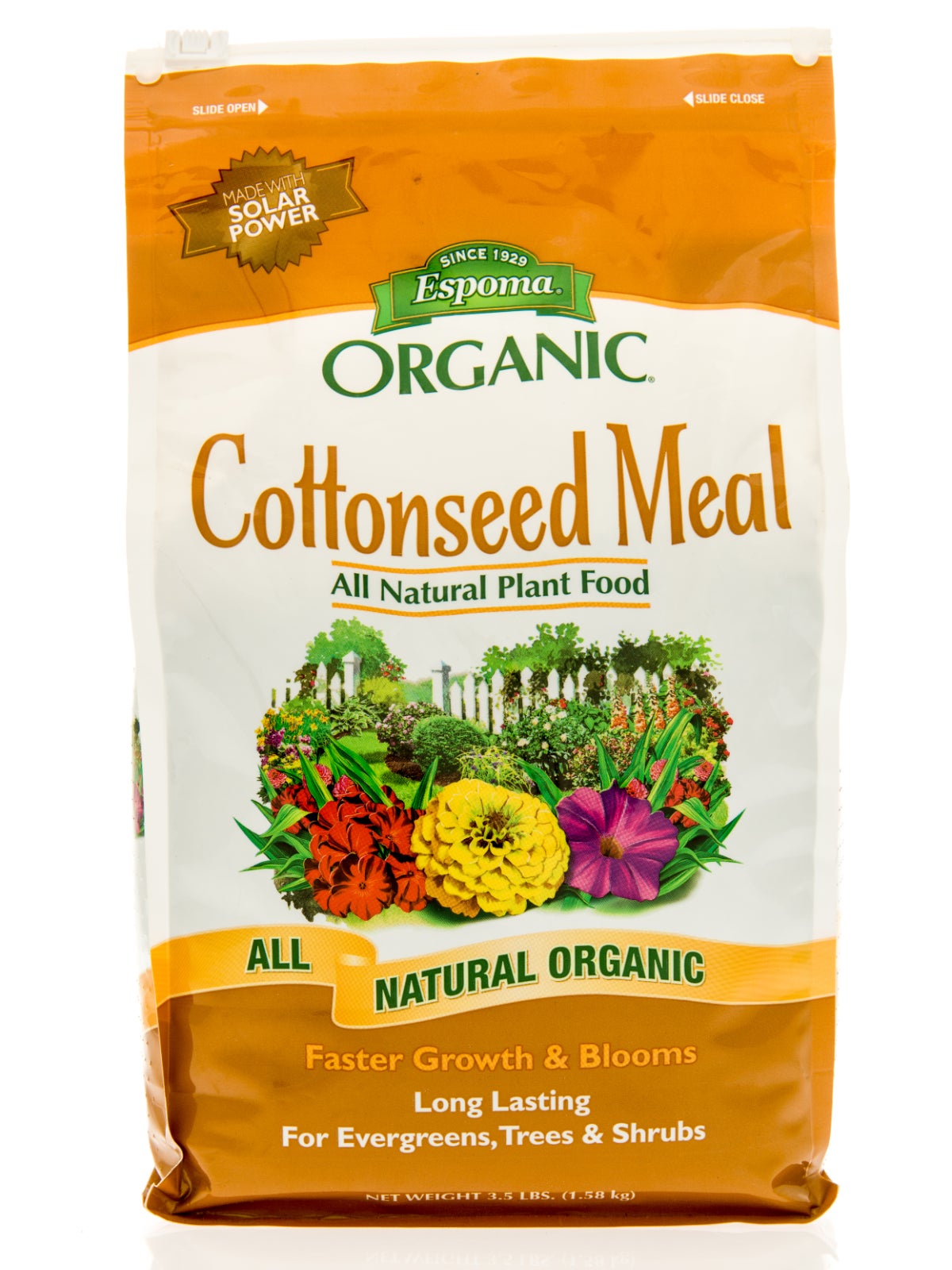Cottonseed Meal Gardening: Is Cottonseed Healthy For Plants

A by-product of cotton manufacturing, cottonseed meal as a fertilizer for the garden is slow release and acidic. Cottonseed meal varies in formulation slightly, but is generally made up of 7% nitrogen, 3% P2O5, and 2% K2O. Cottonseed meal feeds nitrogen, potash, phosphorus, and other minor nutrients over a period of time, eliminating runoff and promoting vigorous growth of vegetables, landscape plants, and turf.
Is Cottonseed Healthy for Plants?
Is cottonseed healthy for plants? Absolutely. Cottonseed meal fertilizer is highly beneficial with a high organic content which aerates tight, dense soil and aids in retaining moisture in light, sandy soil. Due to its slow release time, cottonseed meal feed is safe to use liberally without danger of possible foliage burn, promotes healthy foliage, increases crop production, and fosters profuse, spectacular blooms.
Cottonseed Meal is Best for What Plants?
Cottonseed meal is a desirable and multi-use fertilizer. So the question, “Cottonseed meal is best for what plants?” is answered by replying that most any type of garden plant can get a boost by utilizing cottonseed meal as fertilizer. Cottonseed meal fertilizer is recommended for acid-loving plants such as azaleas, rhododendrons, and camellias, leading to spectacular flowering. Turf grasses, shrubs, vegetables, and roses also benefit from the use of cottonseed meal feed.
Cottonseed Meal and Roses
There are few observances to adhere to when using cottonseed meal. Gardening with cottonseed meal as fertilizer in the rose garden will slightly increase the acidity of the soil when applied in the amount of 1 cup (236 ml.) of cottonseed meal feed, or a combination of cottonseed meal and bone meal worked into the soil. A second application is recommended for late in the summer.
Cottonseed Meal as Fertilizer for Acid Loving Plants
When cottonseed meal gardening among the truly acid loving plants, the goal is to lower the soil pH and increase the availability of elements like iron and magnesium. Yellowing leaves may be a sign that the pH needs to be reduced with an application of cottonseed meal as fertilizer. Most acid loving plants tend to have shallow root systems, so mulch around them with 2 to 3 inches (5-8 cm.) of cottonseed hulls or a mixture of cottonseed, peat moss, oak leaves, or pine needles. This mulch also retains soil moisture, protects from freezing, and keeps soil cool during the hot summer months. A small amount of cottonseed meal or ammonium sulfate mixed into the mulch will prevent nitrogen deficiency during the breaking down of the mulch.
Cottonseed Meal Fertilizer for Turf
To promote the most lush, beautiful lawn, cottonseed meal fertilizer is useful as an aid in water retention and improving soil density, and its slow release time is perfect for turf building. When using cottonseed meal, apply a 1 to 2 inch (2.5-5 cm.) layer over the graded area to be seeded. If soil is extremely bad, use cottonseed meal feed in the amount of 8 to 10 pounds (3.5-4.5 kg.) per 100 square feet (30 m.). Work into the soil, level, seed, tamp, and water well. For established lawn care, use cottonseed meal as fertilizer in the spring. Apply cottonseed meal or a mix of ¾ cottonseed meal and ¼ turf grass fertilizer in the amount of 4 to 5 pounds (2 kg.) per 100 square (30 m.) feet. In mid-summer, reapply at the rate of 3 pounds (1.5 kg.) cottonseed meal, or 2 pounds (1 kg.) cottonseed meal and ½ pound turf fertilizer per 100 square feet (9 sq. m.). Prior to winter, apply 3 to 4 pounds (1.5-2 kg.) cottonseed meal per 100 square feet (9 sq. m.) to encourage root development.
Other Cottonseed Meal Gardening Uses
When using cottonseed meal on shrubs, work 1 cup (236 ml.) cottonseed meal into the soil around small shrubs and 2 to 4 cups (472-944 ml.) around larger specimens or, if transplanting, dig hole twice as wide as needed and backfill with a combination of soil and cottonseed. Water thoroughly and continue to use cottonseed meal fertilizer after shrubs are established. Cottonseed meal can also be used to mulch around the shrub in the amount of 1 pound (0.5 kg.) per 100 square feet (9 sq. m.) to conserve moisture, control weeds, hasten decomposition, and prevent nitrogen deficiency. To new vegetable gardens, amend soil with 4 to 6 pounds (2-2.5 kg.) cottonseed meal and 1 to 1 1/2 pounds (0.5-0.75 kg.) garden fertilizer to each 100 square feet (9 sq. m.) or dig in 1 to 2 inches (2.5-5 cm.) of cottonseed meal, decomposed leaves or grass clippings, rotted hay, or other organic matter. If the garden is established, apply the same amount of cottonseed meal, reduce the garden fertilizer by half, and continue to work in plenty of organics. Mulch around growing plants with 1 to 2 inches (2.5-5 cm.) of cottonseed; work into soil and water in well.
Gardening tips, videos, info and more delivered right to your inbox!
Sign up for the Gardening Know How newsletter today and receive a free copy of our e-book "How to Grow Delicious Tomatoes".

Amy Grant has been gardening for 30 years and writing for 15. A professional chef and caterer, Amy's area of expertise is culinary gardening.